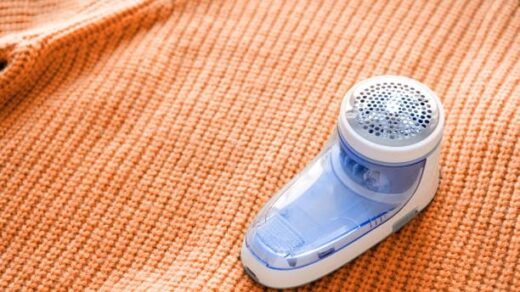Polyester is known for its durability and stalwart resilience against wrinkles and shrinkage, attributes that make it a convenient choice for tablecloths. However, accidents happen, and a grand dinner or a casual brunch can leave unsightly stains marring its surface. One might wonder, for instance, how to get chili oil out of clothes or, in this case, polyester tablecloths. Fortunately, polyester’s synthetic nature often allows for effective stain removal when employing the right approach and materials, restoring your tablecloth to its pristine condition.
Understanding Polyester Tablecloths
What is Polyester?
Polyester is a synthetic fabric made from petroleum-based fibers, which are woven to create a material that’s lightweight, strong, and easy to care for. Polyester tablecloths stand out in the world of linens for their capacity to resist stains, fading, and shrinking, making them especially suited to both everyday use and special occasions. Their enduring nature means that, with the right treatment, stains can often be completely removed, answering the common concern: are olive oil stains permanent? In the case of polyester, they don’t have to be.
Benefits of Polyester Tablecloths
- Durability: Polyester is less prone to tearing and degrading over time, even with regular use or after multiple washes.
- Low Maintenance: It dries quickly and rarely needs ironing, saving time and effort in upkeep.
- Cost-Effectiveness: Generally more affordable than its natural counterparts, polyester tablecloths offer significant value.
- Aesthetic Variety: Available in a wide range of colors and patterns, polyester tablecloths can accommodate numerous decorative preferences, and are forgiving when you need to know how to wash off old stains on the tablecloth effectively.
Common Types of Stains on Polyester
Stains can be as varied as the foods and incidents that cause them, but a few common culprits typically afflict polyester tablecloths:
- Wine and berry stains with their telltale reddish hues.
- Oily spots from salad dressings or greasy foods, prompting the question: how to remove greasy stains on tablecloths?
- Coffee or tea spills that leave a brown tinge.
- Ink marks from pens that can bleed into the fabric.
Understanding the type of stain you’re dealing with is crucial to selecting the most effective cleaning method.

Pre-Treatment Steps
Initial Assessment of the Stain
Before diving into the removal process, it’s essential to assess the stain’s size, severity, and age. Fresh stains are generally easier to manage, while older stains may require repeated treatments. Take note of the stain’s characteristics; this will influence your choice of cleaning agents and the strength of your approach. Remember, the goal is to lift the stain without damaging the fabric’s integrity.
Gather Your Materials
A successful stain removal operation begins with the right tools. Here’s a simple checklist to prepare for the task:
- Clean white cloths or paper towels.
- A gentle brush (like an old toothbrush).
- Stain removal treatments (more on this later).
- A basin or tub for soaking.
- Access to warm water (but not too hot, as this can set some stains).
Here’s where tactics like how to get chili oil out of clothes come into play, adapted effectively for your tablecloths.
| Stain Type | Cleaning Agent |
|---|---|
| Oil-Based | Dish soap or stain remover specifically designed for greasy stains |
| Wine/Berries | Hydrogen peroxide or white vinegar solution |
| Coffee/Tea | Liquid laundry detergent or stain remover with enzymes |
| Ink/Dye | Rubbing alcohol or hairspray |
Pre-Treating the Stain
Before the main wash, it’s essential to pre-treat the stain to break down and lift as much of the discoloration as possible.
- Gently blot (never rub, as this may spread or set the stain further) any excess spill from the fabric using a clean white cloth.
- Apply an appropriate cleaning agent from your materials checklist depending on the stain type.
- Gently work the cleaning agent into the stain using a brush or cloth, starting from the edges and moving towards the center.
- Allow the stain remover to work its magic for at least 15 minutes (unless the product specifies otherwise).
Stain Removal Techniques
General Stain Removal Guidelines
When facing the challenge of a stained polyester tablecloth, it’s vital to act promptly and follow some basic principles:
- Only use warm water for treating and rinsing stains. Hot water can set stains, making them more difficult to remove.
- Avoid bleach unless the polyester is white or specifically labeled as bleach-safe. Bleach can weaken fibers and fade colors.
- Always perform a spot test with the chosen cleaning agent on an inconspicuous area to ensure it won’t cause discoloration or damage.
- Rinse thoroughly between treatments to prevent cleaning agents from interacting with each other and potentially harming the fabric.
By adhering to these guidelines, you can tackle most stains effectively while preserving the condition of your polyester tablecloth.
Specific Stain Removal Solutions
For your tablecloth’s smears and spots, knowing the appropriate specific methods is crucial. Let’s examine tailored approaches for those tricky stains.
- Oil-Based Stains: When learning how to remove greasy stains on tablecloths, a key step is to cover the stain with an absorbent powder such as cornstarch or talcum powder before any liquid treatment. Allow it to sit and soak up the oil for 15 to 30 minutes. Then gently brush away the powder, and apply a liquid dish soap directly to the stain. Dish soap is designed to combat grease and will break down the oils in the stain. After working the soap into the stain, rinse thoroughly and launder as usual.
- Wine and Fruit Stains: The natural acidity in white vinegar can help neutralize these colorful stains. Dab the stain with a solution of one part vinegar to two parts water before laundering. For stubborn stains, pre-soak the tablecloth in a mixture of hydrogen peroxide and water for about 30 minutes—keeping an eye on the fabric to ensure it doesn’t bleach—before washing.
- Coffee and Tea Stains: Immediately blot away as much of the coffee or tea as possible. Then mix water with a teaspoon of liquid laundry detergent, and gently sponge it onto the stain. Let it sit for about 5 minutes before rinsing with warm water. If the stain persists, a gentle rub with a small amount of diluted white vinegar can assist further, followed by laundering.
- Ink and Dye Stains: Rubbing alcohol can be your ally against ink stains. Soak a cotton ball with rubbing alcohol and dab at the stain. Once the ink stops lifting, rinse the stained area with cold water, and then wash the tablecloth according to the care label instructions. If you have hairspray at home, it can be an alternative treatment since many hairsprays contain alcohol that can break down ink.

Post-Treatment Care
After stain treatment, it’s important not to skip the post-care steps to ensure the longevity and upkeep of your polyester tablecloths.
Rinsing and Drying
Rinse the tablecloth thoroughly in cold water to remove any cleaning agent residues. Avoid wringing out the tablecloth which can damage the polyester fibers. Instead, gently squeeze out excess water. Lay flat or hang to dry, as the heat from a dryer can set any remaining stain or weaken fibers.
Ironing and Storing Polyester Tablecloths
If you need to iron the fabric, use a low heat setting and avoid leaving the iron in one place for too long. For storage, fold the tablecloth neatly, or better yet, hang it to avoid creases. Store in a cool, dry place away from direct sunlight to prevent fading or fiber degradation.
Prevention Tips
Keeping your tablecloth spotless is an ongoing process. Here are a couple of tips for prevention:
- Best Practices for Stain Prevention: Use a tablecloth protector whenever possible. This can be a clear plastic cover that lies on top of your tablecloth or a fabric protector spray. Both methods create a barrier that repels stains.
- Routine Maintenance Tips: For routine maintenance, wash your polyester tablecloth regularly after use. However, avoid using fabric softeners as they can weaken the fibers over time. Immediate attention to spills can prevent them from becoming set-in stains.

Conclusion
In summary, while polyester tablecloths can endure a lot, they aren’t impervious to stains. With quick action, proper treatment options, and careful post-cleaning care, you can extend the life and beauty of your polyester tablecloths. The key takeaway is that knowledge, preparedness, and timely action can conquer almost any stubborn stain.
Frequently Asked Questions
- Can I remove set-in stains from a polyester tablecloth?
Yes, set-in stains can often be removed from polyester, but it may take multiple treatments. Start by soaking the tablecloth in warm water with an appropriate detergent, then follow up with the treatment suitable for the specific type of stain. - Should I use bleach on polyester to remove a stubborn stain?
It’s best to avoid bleach on colored polyester fabrics as it can cause discoloration. For white polyester tablecloths, only use bleach if the care label indicates it is safe to do so. - How do I remove red wine stains from my polyester tablecloth?
Blot up as much wine as possible, then apply a mixture of hydrogen peroxide and dish detergent directly to the stain. Let it fizz for a few minutes, then rinse with warm water and launder as usual. - How can I protect my tablecloth from stains during an event?
Consider using a tablecloth protector or applying a fabric protector spray before the event. Also, keep a clean, damp cloth on hand to immediately dab away any spills that occur during the festivities. - Is it possible to remove candle wax from a polyester tablecloth?
Yes, first let the wax harden, then scrape off as much as you can with a blunt knife. Place a clean paper towel over and beneath the wax stain, and gently iron over the paper towel on a low heat setting. The wax should transfer to the paper towel.
With these tips and a solid understanding of fabric care, your polyester tablecloths can continue to add elegance to your meals, without the worry of ruin from accidental spills. Your linens can look as delightful as the dishes served upon them, ensuring your dining experiences are both joyous and aesthetically pleasing.


